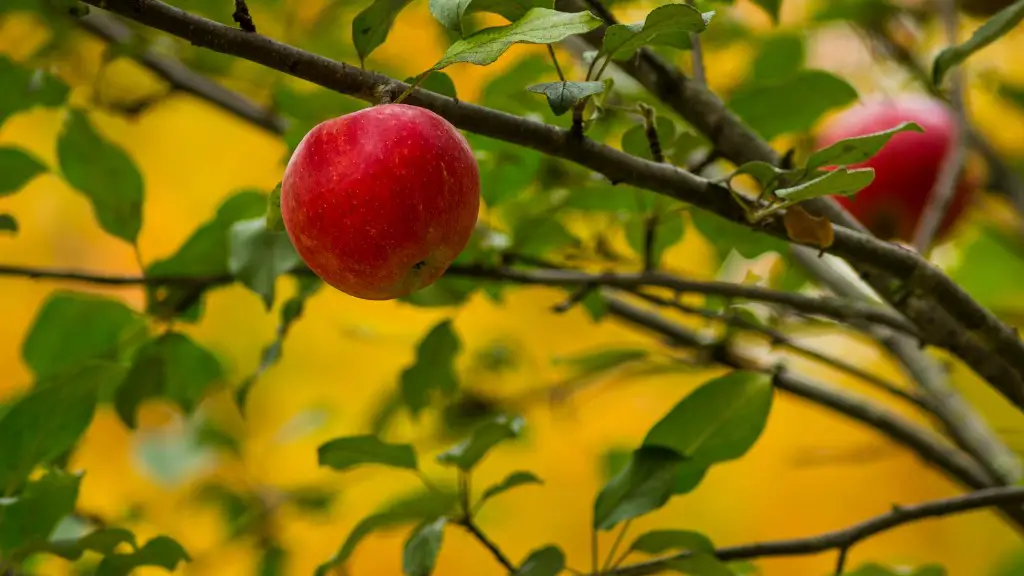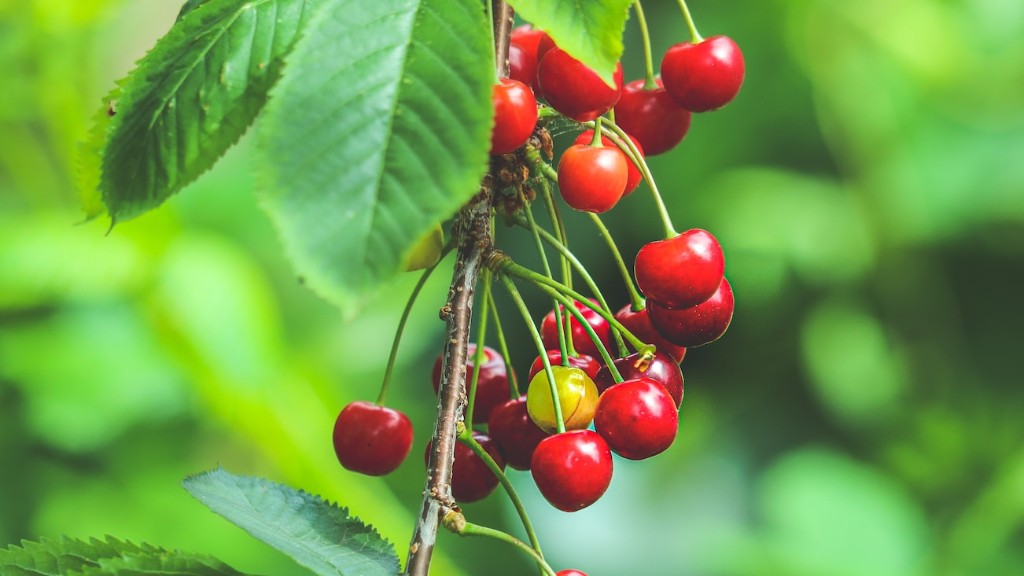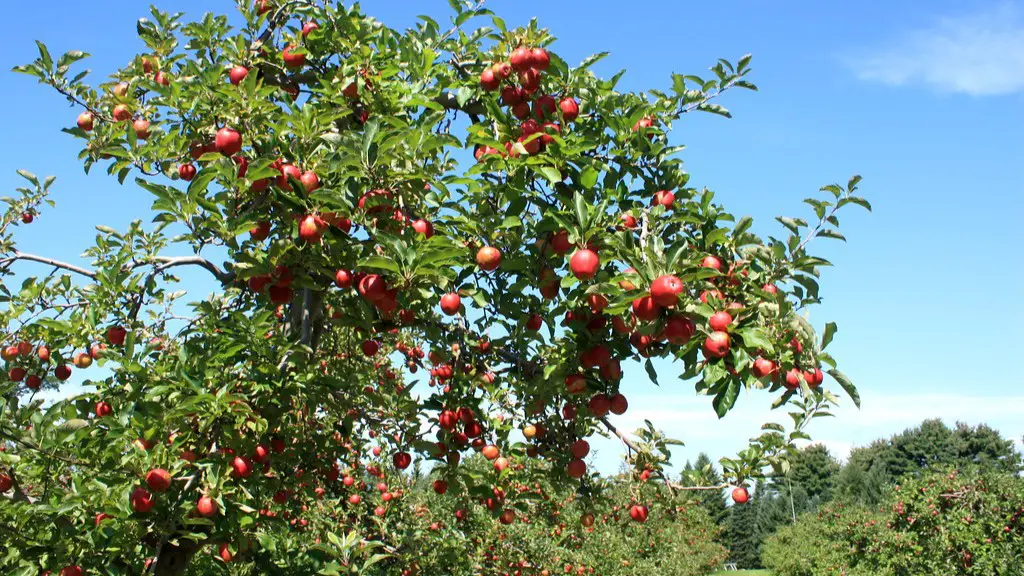For many people looking to make their homes more sustainable and grow their own avocado tree, planting an avocado seed can be an exciting and rewarding process. Avocado trees are beautiful, easy to maintain, and their tasty fruits are a great bonus. There are a few tips and tricks to growing an avocado tree that might help the plant reach fruition.
Firstly, it is important to select the right avocado. Not all avocados are created equal, and when selecting an avocado to grow, you want to make sure to pick one that is not overripe or too soft. You should select a fruit that is fleshy and dark green. This is the optimal avocado for planting and having the best chance for success.
The process of planting an avocado seed does not require any special tools or supplies. You will need a shallow container that is large enough for the seed to fit comfortably. Once a container has been selected, the next step involves actually planting the seed. Carefully slice the avocado open and place the seed in the center of the container. Cover the seed with warm water and leave it in a sunny spot. You should then check the seed every few days.
After a few days, the seed should start to sprout and eventually form a stem and roots. At this point, you should obtain some soil and transfer the germinated seed and root into the soil. Plant the seed 1-2 inches into the soil and then cover with a layer of soil. Now it’s time to wait!
In order to properly care for the avocado tree and ensure it grows, there are a few steps to consider. Firstly, the soil should remain moist but not be too wet. Too much water can actually prevent the roots from growing. You should monitor the water and soil levels throughout the process. Secondly, the avocado should be rotated and tilted to help it receive ample sunlight, as sunlight is essential for the tree to grow.
Finally, patience is key. It can take anywhere from three months to a few years for an avocado tree to bear fruit. During this time, it is important to provide proper care and nutrition and to be patient. If done correctly, it is possible to reap the rewards of a delicious and fruitful avocado tree.
Fertilizing Your Avocado Tree
Once your avocado tree begins to grow, it is important to fertilize your tree correctly. Different seasons call for different types of fertilizer, as certain types of fertilizer can be more effective in different times of the year. During the colder months, it is important to use a slow-release fertilizer that will provide your tree with the necessary nutrients. During the warmer months, you can step up the amount of fertilizer, as your tree will need more nutrients during this time.
Additionally,you can also supplement your fertilizer with a compost-rich soil. Compost is a great source of nutrients for your avocado tree and can help to provide the necessary sustenance for the tree to grow.
It is also important to monitor your avocado tree’s health in order to detect any nutrient deficiencies or other problems. By taking note of the tree’s leaves and examining them for discolorations or brown spots, you can be alerted to any potential issues and take steps to address them promptly.
In addition, pruning is an important part of caring for your avocado tree. Pruning can help to reduce the size of the tree and keep it more manageable. It can also help to remove any dead or dying branches and make room for healthier growth.
Harvesting Your Avocado Tree
Once your avocado tree has grown, it is time to start harvesting the fruits from it. Most avocado trees take between three and four years to start bearing fruits, but with the right care, you can get avocados from your tree much sooner. Avocados are generally harvested when they are almost ripe and when they have turned a dark green color.
Once the fruit is ready to be harvested, it is important to remove the fruit carefully. If the avocado is not ripe enough, it should not be pulled off the tree as this can stunt the growth of the tree. You should also keep in mind that avocados tend to ripen off the tree, so it is best to give them some time on the counter to ripen.
Once the avocados have been harvested, they can be enjoyed fresh or used in a variety of recipes. Avocados are a great source of healthy fat and vitamins, making them an invaluable addition to any kitchen.
Common Mistakes To Avoid
There are some common mistakes that are easy to make when growing an avocado tree from a seed. One of the most common mistakes is over-watering the tree. Too much water can cause the roots to rot and stunt the tree’s growth. It is also important to avoid using too much fertilizer or adding any type of chemical-based fertilizer to the soil. These can damage the tree and cause it to suffer from deficiency.
Another mistake that is often made is that of not pruning the tree correctly. Pruning can help to keep the tree healthy and maintain its growth. If pruning is done incorrectly, it can harm the tree and even cause it to die. It is best to consult a professional before pruning an avocado tree.
Finally, it is important to remember that it takes time for an avocado tree to bear fruit. Patience is key when it comes to having a successful avocado tree. Every tree is different and some may take longer than others to produce fruits, so it’s important to be patient and understand that success may take some time to achieve.
Protecting Your Avocado Tree
Avocado trees can be vulnerable to pests and diseases, so it is important to be aware of potential threats and take steps to protect your tree. If you’re growing your tree outdoors, you should keep an eye out for pests such as snails, slugs, caterpillars, and mites. If you notice these pests, you should remove them promptly.
Planting companion plants around your tree can also help to deter pests. Marigolds and garlic are both known to be natural insect repellents and can help to keep pests away from your avocado tree.
Diseases can also threaten your tree. The most common avocado diseases are root rot, blight, and leaf spot. It is important to monitor the condition of your tree and take steps to prevent any diseases. Keeping the soil well-drained, providing adequate sunlight, and applying organic fungicides can help to protect your tree from diseases.
Maintaining Your Avocado Tree
Once your tree has grown and produce avocado fruits, it’s important to maintain your tree in order to keep it healthy. Regular pruning and weeding are essential for keeping the tree healthy. Pruning can help to maintain the shape of the tree and keep it from becoming overgrown. Weeding can help potential pests from making their homes in your garden.
Additionally, during the colder months, you should continue to regulate water and soil moisture, as this can help to keep the tree from becoming too dry or cold. A good rule of thumb is to make sure that the soil is moist but not overly wet.
If you notice any discoloration or wilting in your tree’s leaves, it is important to take steps to identify the cause and address it promptly. Any signs of disease should be addressed with organic fungicides.
With the right care and attention, your avocado tree can be a rewarding and tasty addition to your home. Planting an avocado seed is a great way to make your home more sustainable while also enjoying delicious avocados.




